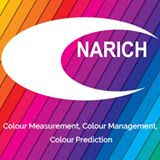While great trouble is taken by Instrument Manufacturers like Konica Minolta to obtain high levels of accuracy and reproducibility, inevitably, a comparison of the numerical values of one measurement to the next of the SAME colour will result in some discrepancies. The big question is, are these differences MEANINGFUL to the observer.
Lets clarify some assumptions:
- Colour is not a property of an Object, but the outcome of the sum of a contextual sensing experience. In simpler language, the colour only looks like it looks under the current viewing conditions. Change these conditions and the colour will appear to change.
- The Eye and the Instrument agree: Colour Sensing Science tries primarily to emulate the human sensing experience. Mostly, if we compare two colours with an instrument, and then make the same visual assessment, we should agree on basic differences like Hue and depth of shade. The problem is that in many instances, the Instrument Settings and Conditions VARY to the Human "Settings" and conditions. Additionally, our minds are agenda driven and tend to see the expected, not necessarily what actually is.
- Instruments all have the same properties: There are around 14 settings and conditions that have to be IDENTICAL to obtain identical numeric values. Any change to a single condition changes an input to the sensing algorithm resulting in a changed output. In practice, most Instruments DIFFER in settings to have some specific market or application benefit.
- Colour can only appear to look the same if the same Colourant's are used. NOT SO. The Chromophoric Chemical Properties may derive from different chemistry meaning that at a certain wavelength colours may be identical, but at another wavelength not.
- Using Colour Space data is the most accurate representation of a colour mathematically: In reality, L*a*b values, to mention but one of a number of colour space algorithms give a hint of the colour like a GPS navigation system. It is fairly accurate, like a Street Number. In comparison Colour Cards are like Postal Codes and only offer an estimate of a colour, some even being as weak as just finding the District! To really describe a colour, a Full Spectral Reflection Curve from a Spectrophotometer As opposed the Lab values from a Colorimeter)
- The above example of a full Visible Light Spectrum from 400nm to 700nm clearly shows precisely which spectra reflect at each nm step. Comparing CURVES is more accurate than say Lab or L*C*h as not only the outcome, but also the full journey to the colour is tracked. This is more like a finger print, and is useful say in food to differentiate between "Legal" and "Illegal" food colourant's that may look the same under a standard set of conditions, but have very different journeys to that colour. The diagram below demonstrates this well.
- Colour A and Colour C will look similar at around 450nm where they cross, and colour C and B around 570nm where they cross.
- For typical Quality Assurance though, the Delta L*a*b Colour Difference calculation is usually sufficient. You don't have all the detail, but sufficient to know how FAR or CLOSE the TARGET and SAMPLES are to make a commercial judgement.
- Visually represented as:
So if we look at just the numerical values over a long period of time without managing the context, the results are practically meaningless. Say the L values differs by 0.2. What does that mean? Can you "See" it? Does the appearance change? Quality managers love numbers, but when it come to colour, learn to love colour DIFFERENCE numbers.
An L value difference, averaged with an *a and *b value difference plot a better description of how far or close the colours are, and if the actual differences are see able or not. A tolerance can be set with this process, as well as a sorting process that makes visual sense.
Images supplied by Konica Minolta Sensing





